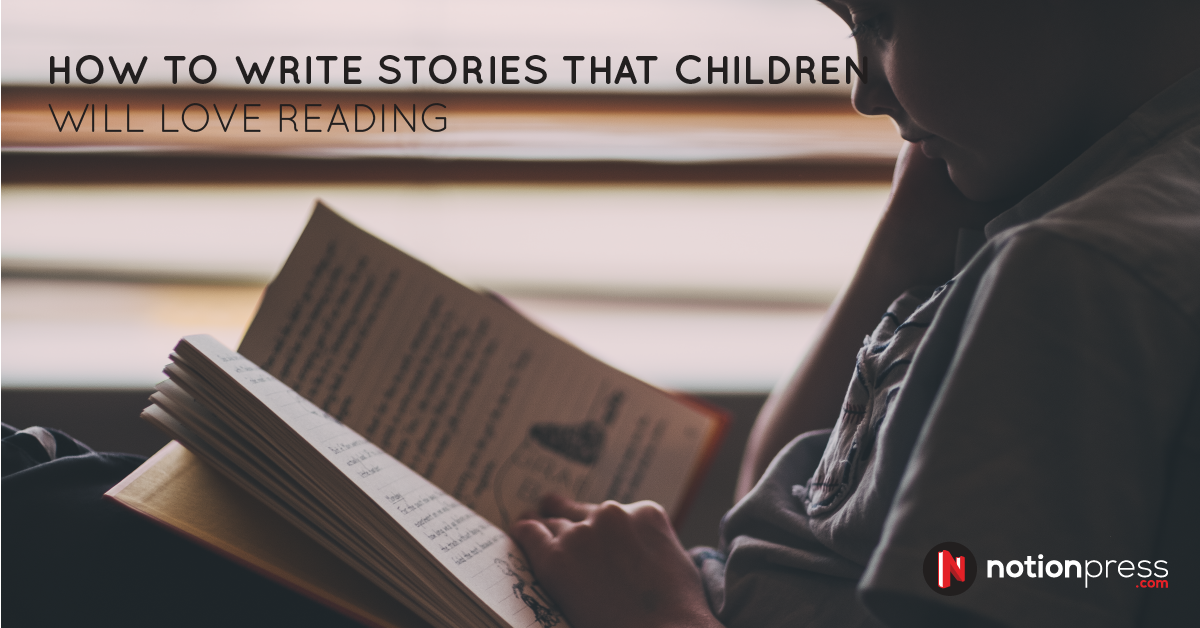How To Write Stories That Children Will Love Reading
Stories are an integral part of one’s childhood. Most of us grew up reading and listening to tales of valour, courage and bravery, such as Ramayana and Mahabharata, and they are still engraved in every child’s memory. A well-written story will capture one’s imagination and stay in their memory for a long time. Children usually remember the stories from their childhood for the rest of their lives; hence, story writing for kids is not an easy task. Here are some tips on ‘How To Write Stories for Children’ that will be helpful for any author who wishes to do so :
1.Pick an age group
The author must decide who their target audience is before they write their book. Books for children aged five to eight require a lot of illustrations, and the language has to be simple and clear. As the age increases, one can use difficult vocabulary, and illustrations may not be required. Most children in the age group of eight to ten are first-time readers, and it is important to keep them engrossed for the duration of the book, hence, the length of the book should not be more than 25,000 words. Books for children aged between twelve and sixteen can include relatable teenage issues like outbursts, depression and addiction to technology, and the length of the book can go up to 50,000 words.
2.Write a basic outline for your story
Once you have decided your target audience, it is time to outline the plot and write the first draft of your book. Some authors prefer to decide a basic outline and then continue the story, according to the demands of the situation. Others prefer to have a clear idea of each scene, so that they can refer to the outline, whenever they experience writer’s block. Either way is fine, but it helps to be flexible with the plot and make changes whenever required. Your books need to have a strong premise, and if the end is decided, then the journey can be tweaked as necessary.
3.Create memorable characters
The characters in your story need to be relatable and likeable, and the reader must be able to identify with the protagonist’s qualities in the story. Most kids’ stories have a child from the intended age group as the lead, for example, Hansel and Gretel, Alice in Wonderland and Charlie and The Chocolate Factory. Kids usually get inspired by characters in a book; hence, it is important to have less people, so as to not confuse the reader. To deal with this, one can write every character’s name in the outline and list out their qualities and see if they enhance the plot. Unnecessary additions usually complicate the story and make it hard for children to comprehend.
4.Decide the theme and plot of your book
Always select a plot that will capture a child’s imagination and take them on a wonderful journey. Fantasy novels such as the Harry Potter series and The Jungle Book appeal to the younger crowd, as they open new worlds for them. Children can understand chronological stories better, rather than several protagonists presenting the story in their points of view. If a book is being narrated to the audience, third person narrative works the best, as it prevents the readers from being biased towards a character. When writing a story for young children, try to avoid conflict, as the stories are short and revolve around few characters. A story’s theme is very important, as it is the central idea a book revolves around. Common themes in children’s books are friendships, family, moral values and responsibility.
5.Effective story setting
Every book is set in a certain background, and the book’s theme and characters are based in that setting. One can create their own realm and place their characters in the plot accordingly. Who can forget the magical world of Hogwarts in Harry Potter, the middle earth in The Lord of the Rings and the mystical land of Narnia! The author of The Lord of the Rings, JRR Tolkien, went a step ahead and even created a new language for his books. While one does not need to do the same, try to create something unique and beautiful, so that it will be etched into the minds of readers. Personification of non-living things and talking animals and objects seem to do the trick for most children’s stories.
6.Children love moral stories!
Most children’s stories have a moral so that the reader can obtain a valuable lesson from the book. ‘You are what you read’. What one reads determines their attitude and perception of the world around them and widens their horizons and elevates their creative abilities. Especially in stories written for young children, try to incorporate a moral and elements that interest them while deciding the plot for the story. Classic examples of stories that provide value education with an interesting storyline include fairy tales and Dr. Seuss’s books. A study conducted by Dr. Kang Lee, Psychologist and Human Development Specialist, on whether classic moral stories promote honesty in children and can reduce their tendency to lie received a resounding yes! It concluded that children who participated were more honest after they heard Pinocchio, The Tale of the Wolf and the Lying Boy and the story of George Washington and the Cherry Tree.
Happy endings always work for children, and the classic formula of good over evil is always bankable. Do remember that children have short attention spans, so break your content into small paragraphs and chapters. Keep revising your draft till you are satisfied with it, and try to put yourself in the reader’s shoes to see if there is anything more you can add to the book.
Notion Press Academy has several tips for first-time authors and for dealing with writer’s block, so do check it out for more tips!






